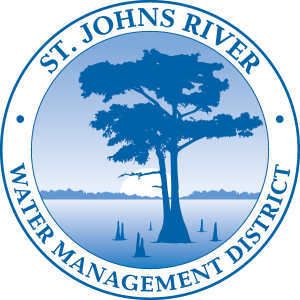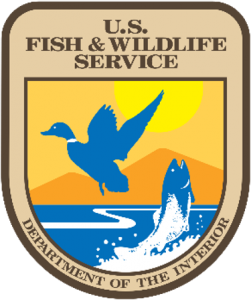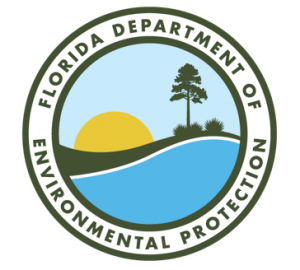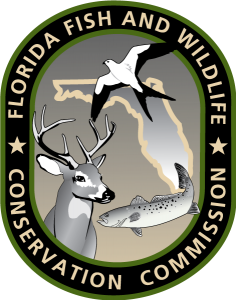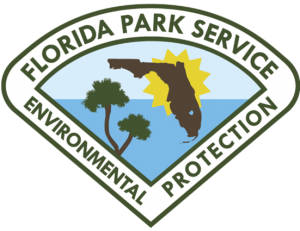Coastal wetlands are among the most biologically productive natural systems on Earth. Wetland habitats are transitional regions between land and sea that provide an array of ecosystem functions. Wetlands filter pollutants from surface waters, store water from storms; prevent flood damage; recharge groundwater; serve as nurseries for saltwater and freshwater fish and shellfish that have commercial, recreational and ecological value; and provide habitat for a variety of fish, wildlife and plants.
The St. Johns River Water Management District and its many partners have worked to reverse the damage done to coastal wetlands to recover the natural and economic benefits they provide.
Overview
The St. Johns River Water Management District and cooperating partners completed construction of the Flagler County Wetland Restoration Project in October 2019. The grading of the spoil piles back into ditches and creating new areas for marsh has been completed, and turbidity barriers removed. With the excavation work complete, monitoring of natural systems continues.
For nearly two decades, the District and cooperating partners have worked to restore areas impacted by dragline ditching.
In the 1950s and 1960s, large excavators called draglines were used to create an extensive network of deep, wide ditches and spoil piles cut through historical coastal wetland habitat, altering the hydrology of the remaining wetland and providing access for mosquito-eating fish. While dragline ditching effectively reduced the mosquito population in coastal wetland areas, an unintended result was a greatly altered and reduced wetland ecosystem. Today, more than 625 acres of dragline-impacted wetlands have been restored by the District and its cooperating partners.
Questions or comments? Contact flaglerrestoration@sjrwmd.com.
Project partners
Additional information
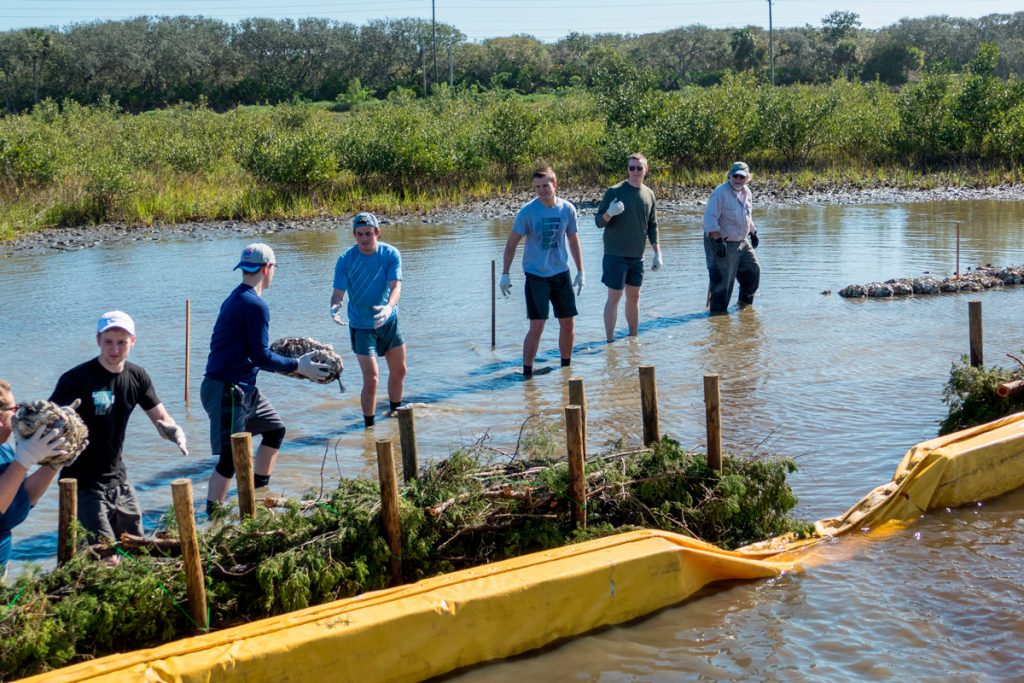
Partnerships, volunteerism vital to the rejuvenation of Florida’s coastal marshes
They’re all twentysomethings, brimming with vigor and youthful energy. Temporary refugees from frigid locales like Chicago and Fort Wayne, Indiana, grateful for the balmy breezes and morning sunlight of late winter in Florida as they prepare to do some heavy lifting and slosh knee-deep in the Halifax River.
“You’re going to want to wear gloves to protect your hands,” implores Ron Brockmeyer, an environmental scientist with the St. Johns River Water Management District. “Oysters are sharp. And be sure to drink plenty of water and put on sunblock. You’ll find that the sun is more intense here in Florida.”
Brockmeyer knows a thing or two about organizing volunteers and treating them well. He’s been leading coastal marsh restoration projects for the District for 24 years and been working in wetlands for 35 years. On this day, he’s orchestrating a shoreline restoration project at North Peninsula State Park, a lonely stretch of marshy wilderness north of Ormond Beach in Flagler County.
The spirited employees of the Brunswick Corp. — the parent company of names like Boston Whaler, Bayliner and Mercury Marine — are amped and ready to move 400 bags of oysters and another 200 sandbags onto a barge for transport to the restoration site. By the day’s end, 22,000 pounds of material will pass through their hands as they create an oyster reef to abate shoreline erosion. This living shoreline technique provides shoreline stabilization without building a bulkhead.
“We’re trying to reclaim a piece of the marsh,” Brockmeyer explains. “We’re using branches, oyster bags and sandbags to create a living fringing reef to protect marshes that we’ve already restored.”
To understand why the District and many partners began restoring thousands of acres of coastal wetlands, one must first understand how they came to be impacted.
Flashback to the frenetic growth of Florida’s population in the 1950s and 1960s. The advent of air conditioning made year-round living tolerable and the Space Race spawned boomtowns along the East Coast. The only niggling drawback was the mosquito population that ruled the state’s coastal marshes. The solution came in the form of large excavators called draglines that transformed Florida from the Mosquito Age to the Modern Age. These machines carved networks of deep, wide ditches through coastal wetlands and piled the spoil in mounds between the ditches. They were also used to create approximately 40,000 acres of impoundments used for mosquito control.
Dragline ditching created areas that were always dry or always wet, thereby interrupting the life cycle of saltmarsh mosquitoes. These bloodsuckers lay their eggs on moist soils and rely on intermittent flooding by tides or rain to trigger hatching and release of larvae. Ditches also allowed fish to access the wetlands and eat mosquito larvae. Dragline ditching reduced the mosquito populations in coastal wetlands, but it also created unintended alterations and reductions in ecosystem services.
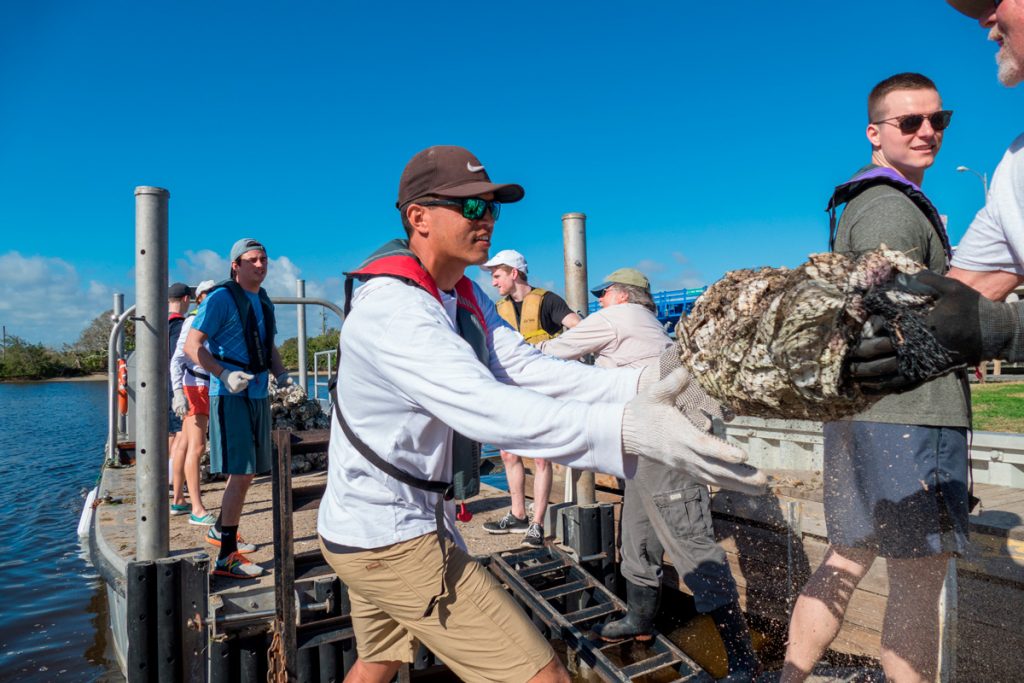
In the extensively altered areas in Mosquito Lagoon, more than 1,200 acres of wetlands were replaced with ditches and spoil piles. Likewise, ditching impacted the Indian River Lagoon and the District’s Northern Coastal Basins (the 125 miles of coastline stretching between the St. Marys River south to Ponce Inlet).
Altered wetlands reduced resources for fish and wildlife and offered less buffering protection to the coastline during storms. The spoil piles, rising above the marsh elevation, attracted invasive plants — such as the Brazilian pepper — and diminished native mangroves and grasses that provide shelter and food for fishes (especially juveniles), crabs and shrimps.
Mosquito impoundments dealt another blow to the life cycle of fish and other creatures in the Indian River Lagoon. Mosquito impoundments interrupt mosquito breeding by creating isolated wetlands that can be flooded with water from wells or the adjacent waterways. Soil from ditches dug around the wetland created a dike, which isolated a portion of the wetland from the adjacent waterway. Impoundments obliterate wetland functions and destroy wetland vegetation. They also hindered the movement of fish and invertebrates that normally use the wetlands for breeding, feeding and refuge from predators.
In 1991, the District adopted a method to reconnect the isolated wetlands to the Indian River Lagoon in a way that allowed marine life to flourish while maintaining the ability to control mosquitoes. Working with state, county and federal partners, the District has reconnected approximately 19,490 acres of coastal wetlands to the lagoon. Some additional impoundments, no longer needed for mosquito control, were fully restored. Nearly 2,320 acres were restored, returning 286 acres of dike and ditch to their natural wetland elevation and eliminating more than 42 miles of dikes.
After developing dragline ditch restoration methods, a pilot project was implemented in early 2000. As a result of this successful pilot, Volusia County bought two marsh excavators — earth-moving machines modified with pontoons to transform them into amphibious machines. The District partnered with Volusia County over the next 15 years to address 615 acres of disturbed wetlands in Mosquito Lagoon and within the Northern Coastal Basins returning 245 acres to wetland elevation.
Coastal wetlands have also been destroyed by the placement of dredge spoil. At Pine Island, District land managers and Brevard County’s Environmentally Endangered Lands program completed 63 acres of dredge spoil removal, restoring these areas to coastal wetland elevation. Following that lead, more than 92 acres of dredge spoil were removed at North Peninsula State Park, where the volunteers are building a living shoreline.
“Partnerships have been vital to our success in restoring coastal marshes,” says St. Johns River Water Management District Executive Director Dr. Ann Shortelle. “We’ve worked together for a common goal and we’ve seen the mended marshes flourish with life and provide the adjacent waterbodies with important benefits.”
Over the years, partners have included the U.S Fish and Wildlife Service, Florida Fish and Wildlife Conservation Commission, Kennedy Space Center, National Oceanic and Atmospheric Administration, National Park Service, Florida State Parks, and Volusia, Indian River and Brevard counties, and countless volunteers.
“The restored areas aren’t always pretty immediately after work is completed, but over time native plants and animals return,” adds Brockmeyer, whose work healing wetlands earned one of six prestigious 2012 National Wetlands Awards given by the Environmental Law Institute, Washington, D.C.
He adds, “Wading and shore birds become a common sight again. Greater variety and numbers of fishes, crabs and shrimps thrive in their new habitat.”
Note: This story originally appeared in the spring 2018 (April 2018) edition of the District’s StreamLines publication.
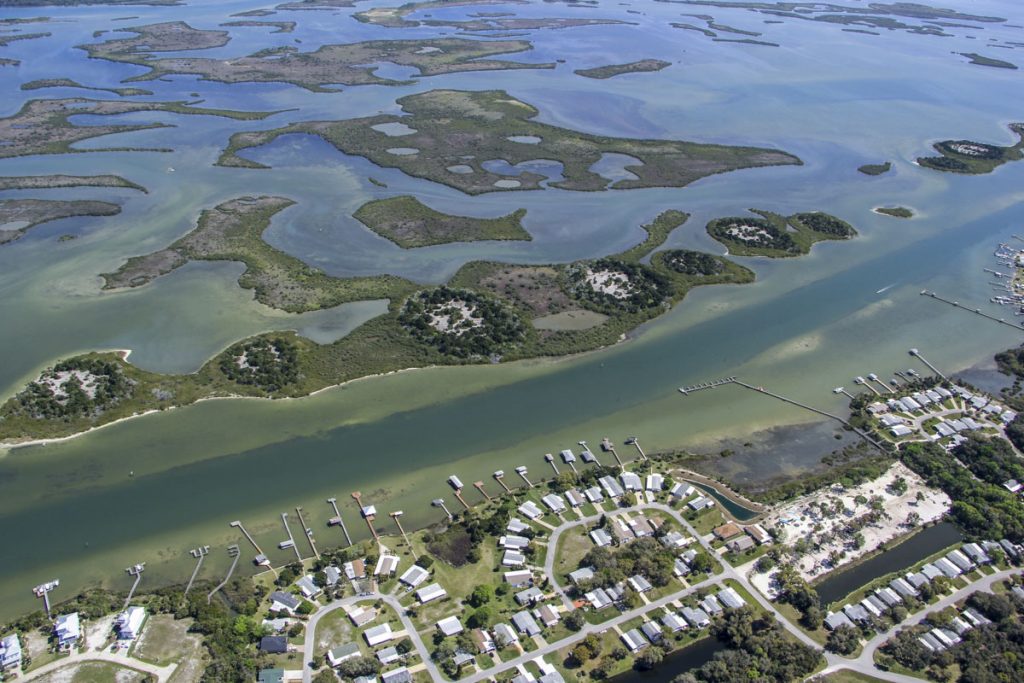
In the 1950s and 1960s, large excavators called draglines cut extensive networks of deep, wide ditches through coastal wetlands and piled the spoil in mounds between the ditches. This practice created areas that were always dry or always wet, thereby, interrupting the life cycle of saltmarsh mosquitoes, which lay their eggs on moist soils and rely on flooding by tides or rain to trigger hatching and release of larvae. The ditches also allowed fish to access the wetlands and eat mosquito larvae. Dragline ditching reduced the mosquito populations in coastal wetlands, but it also created unintended alterations and reductions in ecosystem services.
In the extensively altered areas in Mosquito Lagoon, up to 80 percent of wetlands were replaced with ditches and spoil piles, but ditching also can be found along the Indian River Lagoon and in the District’s Northern Coastal Basins. The associated reductions in productivity and ecological function include less resources for fish and wildlife and less protection from storms that erode wetlands. Other impacts included spread of invasive plants, such as the Brazilian pepper, that colonize spoil piles; diminished numbers of mangroves due to this colonization of spoil piles; loss of plants and grasses that serve as shelter and sources of food for fishes (especially juveniles), crabs and shrimps
Marshes with dragline ditches can be restored by an amphibious excavator mounted on pontoons. Vegetation and sediment from the spoil piles is placed in the adjacent ditch, and the whole area is graded to the elevation of remaining adjacent wetland. The resulting restored wetlands provide more space for wading and shore birds and greater production of fishes, crabs and shrimps and the plants they use.
Other benefits include larger numbers of native wetland plants, such as black mangroves; less invasive vegetation; improved shelter for juvenile fish in the remaining shallow water; no increase in mosquito breeding.
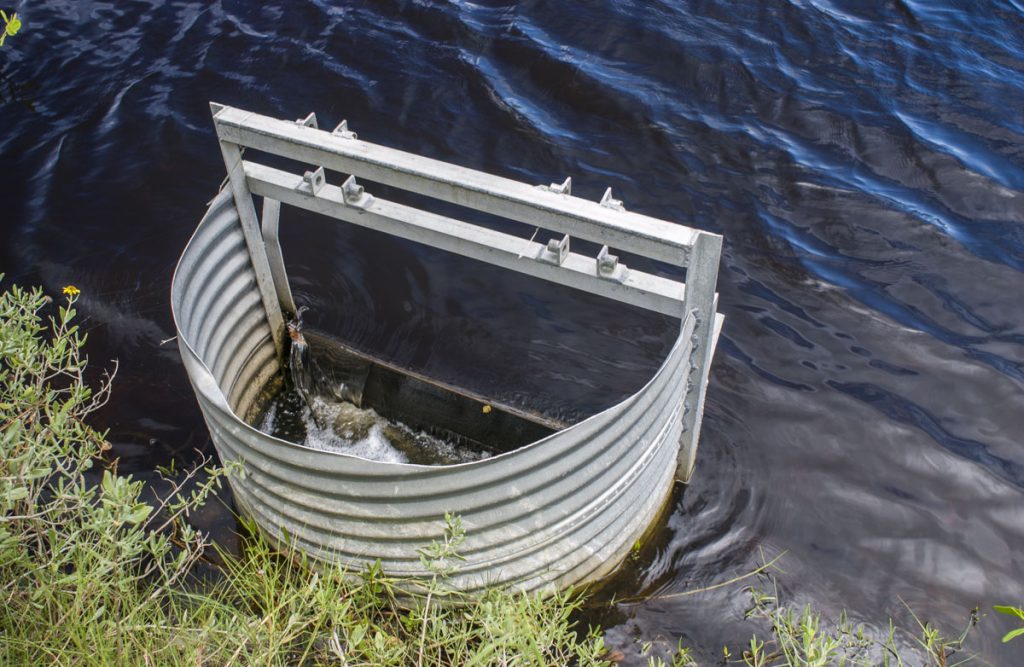
Mosquito impoundments were designed to reduce mosquito breeding by creating isolated wetlands that could be flooded with water from wells or the adjacent waterway, such as the Indian River Lagoon. The impoundments were constructed with heavy machinery that used sediment dug out of a “borrow ditch” to create a dike, which isolated a portion of the wetland from the adjacent waterway. Impoundments obliterate wetland functions and destroy wetland vegetation.
Impoundment impacts also include widespread changes in plant and animal communities, invasion of nonnative plants on the dike, primarily Brazilian pepper trees; loss of access to wetlands used for breeding, feeding and refuge from predators by fishes and invertebrates
Decades of research has shown mosquito breeding can be managed with less undesirable consequences by reconnecting impoundments to adjacent waterways via culverts and flooding the impoundments only during September through May, the breeding season for mosquitos. This seasonal approach to controlling mosquitos is known as rotational impoundment management, or RIM. Culverts reinstate access to historical nursery and feeding grounds for vast numbers of fishes, shrimps and crabs. Wetland vegetation also benefits from the exchange of water.
Nearly half of the acres of impounded wetlands lie within the Kennedy Space Center/Merritt Island National Wildlife Refuge/Canaveral National Seashore complex. Although initially constructed to control mosquitos, many of these impoundments are managed to benefit migratory birds (primarily ducks). Where mosquito control and wildlife management are not priorities, impoundments have been fully restored. This process involves burying vegetation and sediment from the dike in the borrow ditch and grading the restored area to the existing wetland elevation.
From the 1880s through the 1950s, navigation channels were dredged to create and maintain what is now the Intracoastal Waterway in northeast Florida. In many areas, the channel was cut through pristine wetlands, with large amounts of spoil deposited on adjacent wetlands, especially District’s Northern Coastal Basins.
Areas impacted by dredge spoil can be restored to a healthy, productive marsh and tidal creek system that is connected to the adjacent estuary. Work includes clearing vegetation from spoil piles, excavating and disposing of spoil, grading the site to match elevations in adjacent wetlands, and re-vegetating the restored surface with species similar to those in surrounding marshes.


